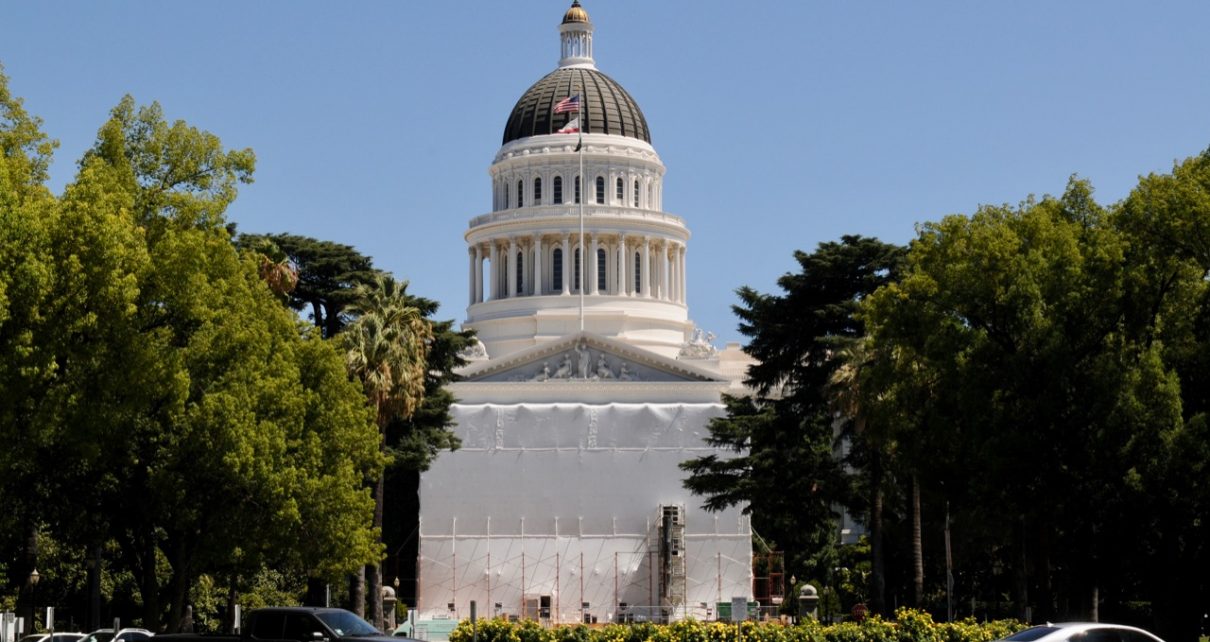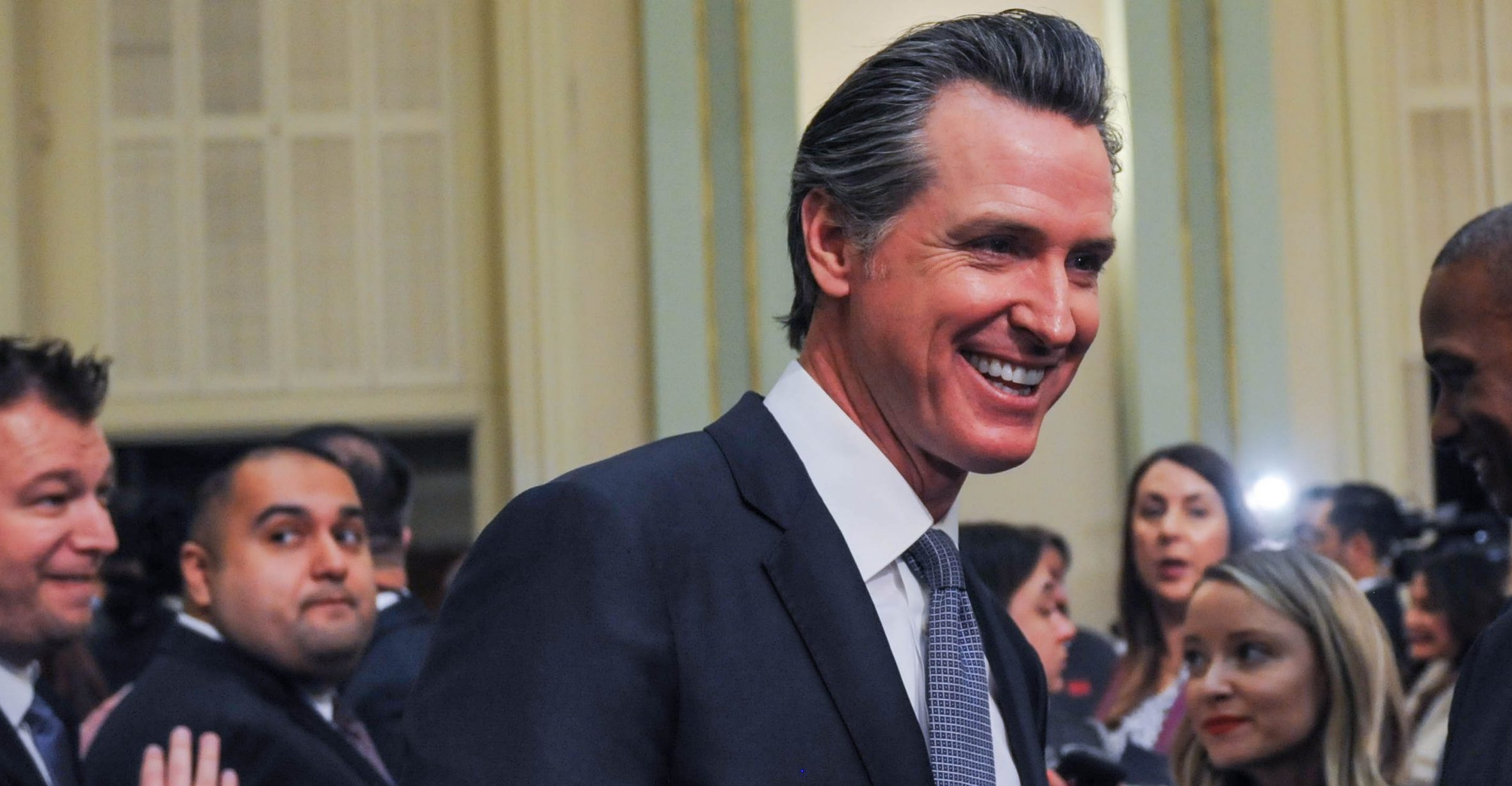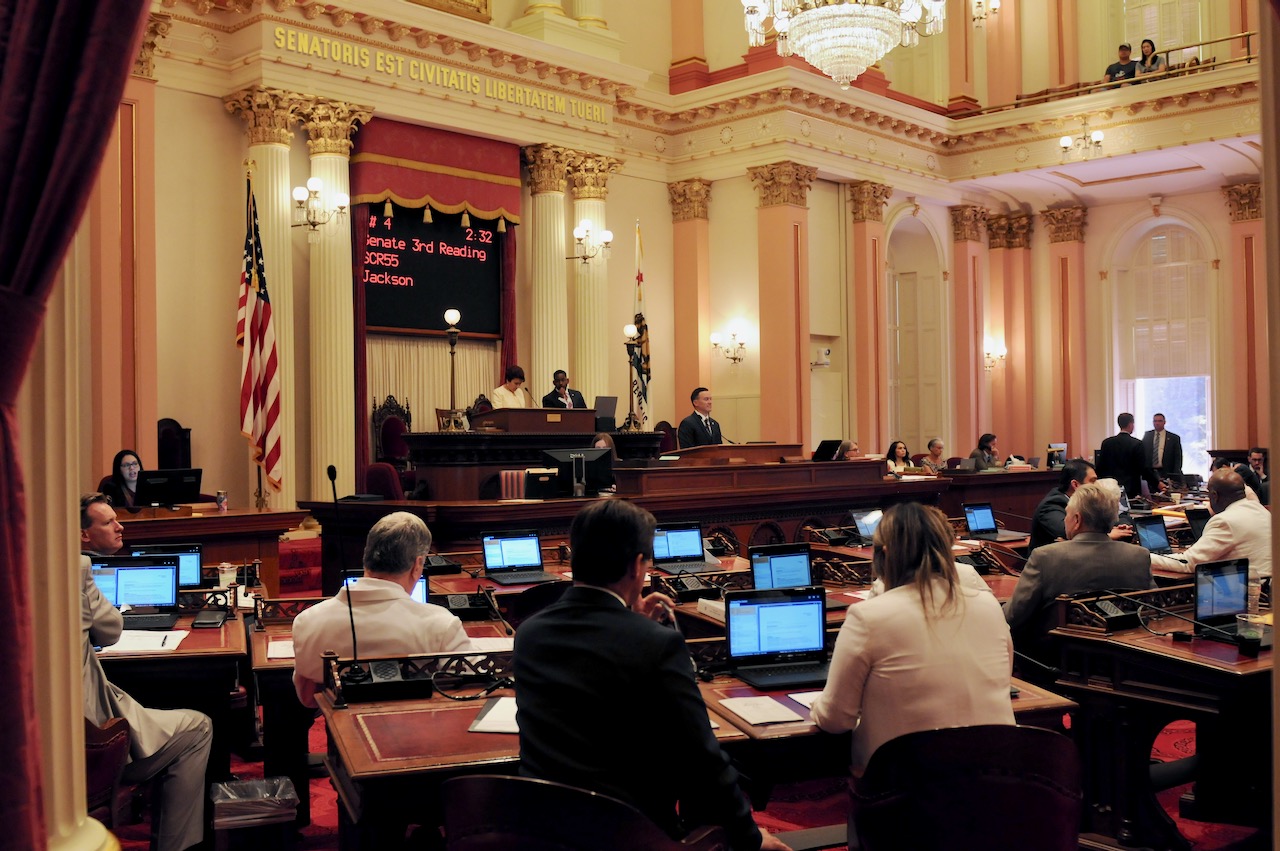
California State Capitol Annex demolition. (Photo: Kevin Sanders for California Globe)
Enrolled Bill Reports and Gubernatorial Action
Ministerial aspects of bills for the benefit of the Governor
By Chris Micheli, September 20, 2019 7:00 am
Once an enrolled bill reaches the Governor’s Desk for final action, “enrolled bill reports” are produced for the Governor and his senior staff to consider the merits of a bill pending on his or her Desk. An “enrolled bill” is the final version of the bill that has passed both houses of the Legislature and is pending action by the Governor. California’s Governor has three choices with a bill that reaches his or her Desk: sign the bill; veto the bill; or, allow the bill to become law without his or her signature.
The Enrolled Bill Report (most often referred to as an “EBR”) is the analysis of a bill with information and a recommendation for action by the Governor. While agency or department bill analyses, including those issued by the Department of Finance (DOF), can become a matter of public record once they have been approved for distribution by the Governor’s Office, the EBRs remain confidential as private communications with the Governor.
EBRs are prepared for bills, but not for constitutional amendments or resolutions (including concurrent, joint or individual house resolutions) because these measures are not acted upon by the Governor. Generally, there are at least three EBRs prepared for the Governor’s review: Department of Finance, the relevant agency that has jurisdiction over the subject matter of the bill, and Legislative Counsel.
The DOF prepares an EBR that primarily focuses on the estimated fiscal impact of the bill. An important aspect of this fiscal analysis is whether the fiscal impact of the bill has been accounted for in the state budget. If it has not, the DOF usually opposes the bill purely on fiscal grounds because such a measure would result in additional, un-budgeted revenue loss.
Although DOF’s focus is primarily fiscal in nature, occasionally the DOF does raise policy concerns with a bill. In terms of bill analyses versus EBRs, the general rule is that, for bills that were opposed during the legislative process, the DOF’s EBR recommends a veto. On the other hand, if the DOF supported a bill during the process, then its recommendation in the EBR is usually to sign the measure. DOF can also take a neutral position on a bill and not recommend a signature or a veto.
In addition, the relevant state agency makes a recommendation in its EBR submitted to the Governor’s Office. In most circumstances, the department, board or commission that has jurisdiction over a bill’s subject matter or the department which is directly or indirectly impacted by the bill’s provisions will submit an EBR. Naturally, the Governor and staff want to understand the regulator’s view of the bill and how it would impact their program.
However, there is another level of review before the Governor’s Office receives that EBR. The EBR goes to the agency that oversees the department, board or commission. For example, the Department of Conservation prepares an EBR with its analysis and recommendation, which is then forwarded to the Natural Resources Agency. It is the Agency that then decides what the final recommendation will be to the Governor’s Office in the EBR.
The Legislative Counsel also prepares an EBR for each bill that the Legislature sends to the Governor to, among other things, identify any conflicts between the bill and any other bills passed by the Legislature in the same Legislative Session. This is done to ensure that later enacted bills do not “chapter out” earlier enacted bills. So, for example, the Legislative Counsel’s EBR may recommend the order in which the Governor signs bills affecting the same code section(s).
In addition, a copy of the Legislative Counsel’s analysis is delivered to the bill’s author, which is required by the Joint Rules of the Assembly and Senate. This EBR does not make a policy or fiscal recommendation on the bill. Instead, this EBR addresses the ministerial aspects of the bill for the benefit of the Governor and his or her staff.
Finally, the Governor’s bill file normally contains letters from outside parties that are urging the Governor to sign or veto the bill. These are often submitted by interest groups that had supported or opposed the bill as the measure traveled through the legislative process. Now their letters of support become letters requesting the Governor’s signature on the bill, while their letters of opposition become letters requesting the Governor to veto the bill.
Often times the bill’s author sends a letter requesting the Governor’s signature on the bill. And the Governor’s staff may have their own notes from meetings they have held with proponents and opponents of the bill. Some governor’s staff have included the Senate Floor analysis in the bill file as well, or independent bill analyses and studies. Of course, the final version of the bill is at the top of the file so that the Governor can read the measure.
All of these documents are intended to provide the Governor and his or her staff with the information they need to make an educated decision about the bill before the Governor for final action. Depending on the bill, and how the particular governor approaches decisions on pending legislation, these EBRs can be the critical basis for whether the bill gets signed or vetoed.
- Third Quiz on Where Areas of Law Are Found in the California Codes - December 30, 2025
- Management of Unclaimed Property - December 30, 2025
- Petitions and Responses in Arbitration - December 29, 2025




